All issues

Volume 47 (2016)
- Issue 4 Pages 153-
- Issue 3 Pages 137-
- Issue 2 Pages 91-
- Issue 1 Pages 3-
Volume 47, Issue 4
Displaying 1-3 of 3 articles from this issue
- |<
- <
- 1
- >
- >|
Original Article
-
Shigeru HAYASHI2016 Volume 47 Issue 4 Pages 153-161
Published: 2016
Released on J-STAGE: December 27, 2016
JOURNAL FREE ACCESSAlthough non-invasive methods to evaluate atherosclerosis based on the arterial pressure volume index (API) and arterial velocity pulse index (AVI) have been newly developed, the relationship between those methods and standard tools consisting of the cardio-ankle vascular index (CAVI), arterial stiffness index (ASI), ankle-brachial pressure index (ABI), and intima-media thickness (IMT) for the evaluation of atherosclerosis has yet to be examined. The aim of this study was to elucidate the usefulness of API and AVI in comparison with standard non-invasive methods for atherosclerosis. Atherosclerotic outpatients (184 cases, males: 48, females: 136; mean age: 72.4 ± 10.4) diagnosed between April 2006 and December 2012 in our clinic were enrolled in this study. API, AVI, CAVI, ASI, ABI, and IMT were measured retrospectively, and further statistical analyses including Pearson’s correlation coefficient test and multiple regression analyses among those methods were performed. In all patients, API was significantly correlated with age, AVI, ASI, pulse pressure, systolic blood pressure, LDL-cholesterol, platelet aggregation, and height (inversely), while AVI was correlated with age, API, and pulse pressure; inversely with height, weight, body mass index (BMI), and hemoglobin (Hb). In order to clarify the effect of age on API and AVI, all patients were stratified into middle- (35-64 years old, n =39, m/f: 20/19, mean age: 56.5 ± 6.1) and old- (65-94 years old, n =145, m/f: 29/116, mean age: 76.6 ± 6.3) aged groups. API was significantly correlated with height (-0.44), CAVI (0.43), and ASI (0.69) in the middle-aged group, but significantly with systolic blood pressure (SBP) (0.30) and pulse pressure (0.32) in the old-aged group. Moreover, AVI was correlated with weight (-0.42) and BMI (-0.45) in the middle-aged group, but significantly with weight (-0.25), SBP (0.23), and pulse pressure (0.25) in the old-aged group. Stepwise multiple regression analyses of API and AVI revealed that R 2 was higher in the middle-aged group (0.53 vs. 0.17 for API) than in the old-aged group (0.36 vs. 0.15 for AVI), respectively. In conclusion, API and AVI were correlated with CAVI and ASI in the middle-aged group and were suggested to be suitable for the non-invasive measurement of atherosclerosis.View full abstractDownload PDF (281K)
-
[in Japanese]2016 Volume 47 Issue 4 Pages 163-165
Published: 2016
Released on J-STAGE: December 27, 2016
JOURNAL FREE ACCESSDownload PDF (275K) -
[in Japanese]2016 Volume 47 Issue 4 Pages 167-170
Published: 2016
Released on J-STAGE: December 27, 2016
JOURNAL FREE ACCESSDownload PDF (470K)
- |<
- <
- 1
- >
- >|